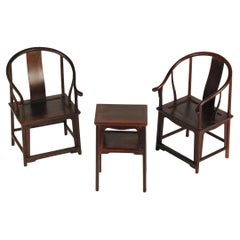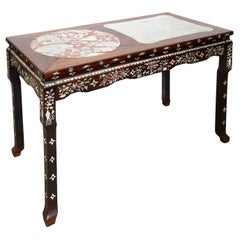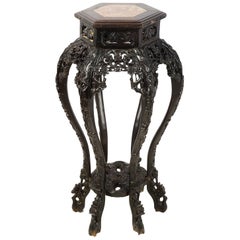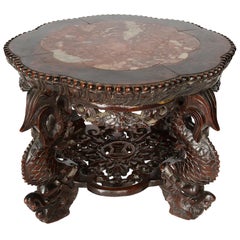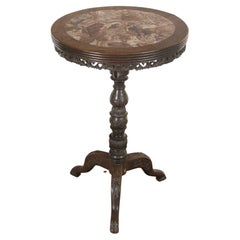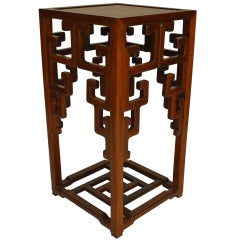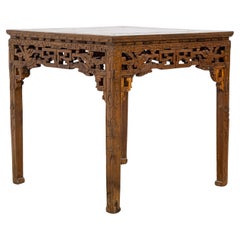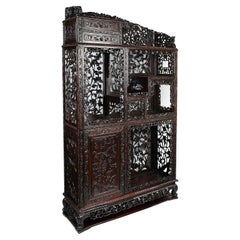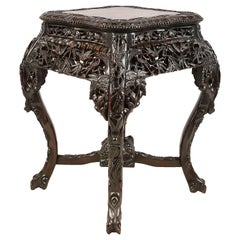Chinese Hardwood Furniture
21st Century and Contemporary Chinese Qing Models and Miniatures
Hardwood
Antique Late 19th Century Chinese Chinese and East Asian Rugs
Marble
Antique 19th Century Chinese Chinese Export Tables
Hardwood
Antique 19th Century Chinese Chinese Export Tables
Hardwood
Antique 19th Century Chinese Tables
Marble
Antique 18th Century Chinese Chinese Export Pedestals
Hardwood
Antique Late 19th Century Unknown Chinese Export Furniture
Hardwood
Antique Late 19th Century Chinese Chinese Export Furniture
Hardwood
Antique 19th Century Chinese Chinese Export Side Tables
Hardwood
Antique Late 19th Century Chinese Chinese Export Card Tables and Tea Tables
Hardwood
Antique Late 19th Century Chinese Chinese Export Furniture
Hardwood
Antique 19th Century Chinese Center Tables
Hardwood
Antique 19th Century Chinese Center Tables
Marble
Antique Late 19th Century Chinese Vitrines
Hardwood
20th Century Chinese Paintings and Screens
Jade
Antique 19th Century Chinese Qing Furniture
Cane, Hardwood
20th Century Side Tables
Hardwood
Antique 19th Century Chinese Export Cabinets
Hardwood
Antique 1840s Chinese Export Tables
Hardwood
20th Century Chinese Qing Console Tables
Hardwood
Antique Mid-19th Century Chinese Chinese Export Center Tables
Marble
Antique 19th Century Chinese Chinese Export Magazine Racks and Stands
Hardwood
Antique Early 19th Century Chinese Furniture
Hardwood
Antique Early 19th Century Chinese Furniture
Marble
Antique 19th Century Chinese Chinese Export Side Tables
Hardwood
Antique 19th Century Chinese Desks and Writing Tables
Hardwood
Antique 19th Century Chinese Side Tables
Hardwood
Early 20th Century Chinese Sculptures and Carvings
Hardwood
20th Century Chinese Chinese Export Antiquities
Wood
Early 20th Century Chinese Sculptures and Carvings
Hardwood
Antique 19th Century Chinese Chairs
Hardwood
Antique Mid-18th Century Chinese Chinese Export Cabinets
Hardwood
Early 20th Century Chinese Chinese Export Side Tables
Marble
Antique Early 19th Century Chinese Console Tables
Hardwood
Early 20th Century Chinese Qing Stools
Hardwood
Antique 19th Century Chinese Furniture
Breccia Marble
Antique 19th Century Chinese Dining Room Tables
Marble
Antique 19th Century Chinese Chinese Export Cabinets
Hardwood
Antique 19th Century Chinese Tables
Hardwood
Early 20th Century Chinese Qing Stools
Wood
Early 20th Century Chinese Qing Stools
Wood
Antique 19th Century Chinese Chinese Export Furniture
Brass
Mid-20th Century Chinese Qing Scholar's Objects
Hardwood
Antique Late 19th Century Chinese Qing Stools
Hardwood
20th Century Chinese Chinoiserie Table Lamps
Hardwood
Antique 19th Century Chinese Chinese Export End Tables
Hardwood
Antique 1880s Chinese Chinese Export Coffee and Cocktail Tables
Hardwood
Antique 19th Century Chinese Chinese Export Console Tables
Hardwood
Early 20th Century Chinese Furniture
Hardwood
Antique 19th Century Chinese Chinese Export Side Tables
Hardwood
Antique Late 19th Century Chinese Antiquities
Hardwood
Early 20th Century Chinese Chinese Export Furniture
Hardwood
Antique Late 19th Century Chinese Qing Pedestals
Marble
Antique 19th Century Chinese Armchairs
Hardwood
Antique Late 19th Century Chinese Qing Stools
Hardwood
Antique Early 19th Century Chinese Chinese Export Pedestals
Jade
Antique 1880s Tables
Hardwood
Antique Mid-19th Century Chinese Chinese Export Coffee and Cocktail Tables
Hardwood
- 1
- ...
Chinese Hardwood Furniture For Sale on 1stDibs
How Much is a Chinese Hardwood Furniture?
- Is Chinese elm a hardwood?1 Answer1stDibs ExpertFebruary 22, 2021The Chinese elm (Ulmus parvifolia) is a hardwood, and it grows in hardiness zones 5b through 10a. Hardiness zones are ranges of climatic conditions in every part of the U.S.
- 1stDibs ExpertJune 15, 2023To care for Chinese lacquered furniture, wipe it with a damp cloth regularly. You can use a paste wax intended for use on lacquer finishes to restore shine, but avoid using harsh furniture polishes and cleaners on pieces. On 1stDibs, shop a range of lacquered furniture.
- 1stDibs ExpertApril 5, 2022Chinese-style furniture is usually called Chinoiserie. The term indicates furniture and decorative objects produced in Europe and North America that borrow design elements from pieces made in China and other East Asian countries. On 1stDibs, find a collection of Chinoiserie.
 PAGODA REDOctober 7, 2020
PAGODA REDOctober 7, 2020To determine the age of a Chinese furniture piece, look carefully at the joinery and finish. Natural expansion and contraction of the wood over time will cause a joint to protrude or retract, distorting a once-seamless fit. Antique lacquer finishes become crackled and worn over time. Areas of exposed wood, such as the underside of a table, the footrest of a chair, or the back of a cabinet should appear raw and dry compared to the finished surface. With use, the legs of tables and chairs become weathered near the bottom from precipitation and use.
- 1stDibs ExpertNovember 4, 2024To identify antique Chinese furniture, look carefully at its details. Chinese craftsmen often built furniture using mortise and tenon joinery, eliminating the need for nails and screws. If you see this type of hardware, your piece is likely not at least 100 years old, especially if the hardware still looks new and shiny. Since antique furniture was handmade, you will normally see slight imperfections, such as tool marks or slight variations in carvings. Pieces that appear completely uniform and pristine are less often genuine antiques.
When present, maker's marks can also be helpful. Research the marks to learn more about when the maker was active and producing pieces like yours. Alternatively, you can have a certified appraiser or experienced antique dealer evaluate your furniture for you.
Shop an assortment of antique Chinese furniture.
